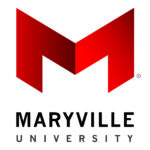Yet Large Completion Gaps Remain, According to Ed Trust
WASHINGTON, Dec. 2, 2015 — In recent years, many college leaders have crowed about improvements in their graduation rates. But it’s important to ask — improvement for whom?
According to a new Ed Trust report, Rising Tide: Do College Grad Rate Gains Benefit All Students?, there have been real improvements: More than two-thirds of all four-year public colleges and universities increased graduation rates from 2003 to 2013. And among the 255 institutions that improved and serve a sizable population of African American, Latino, and Native students, 77 percent raised graduation rates for their underrepresented minority students (URMs).
Yet, despite this good news, far too many institutions are not even narrowing longstanding gaps between groups. Of the 255 institutions examined, the authors found the graduation rates for URMs increased only slightly more than that for white students (6.3 versus 5.7 percentage points). This means that gaps have narrowed by less than 1 percentage point in 10 years — an improvement rate far too slow to close completion gaps, at least in this century.
Looking underneath the averages, the report finds different patterns for different groups of students. Improvements were greatest for Latino students (7.4 percentage points), and Native students saw an increase of 6.4 percentage points. Gains among black students were the lowest (4.4 points), which means that gaps between black and white students actually increased.
“We caution institutional leaders who celebrate their graduation rate gains to take a good look at their data and ask whether they are doing enough to get more African American, Latino, and Native students to graduation and to close completion gaps,” said Kimberlee Eberle-Sudré, Ed Trust’s higher education policy analyst and co-author of the report. “The answer for many institutions is, ‘No.’ Fewer than half of the institutions we analyzed raised rates for their underrepresented students and cut gaps. Institutions can and must do more to serve URM students.”
The data for individual institutions make clear that what institutions do matters. Some are achieving the twin goals of gains in overall completion and closing gaps. Others are simply riding the tide of overall gains, while URMs lose ground and gaps widen. This report calls on institutional leaders, especially those from institutions that are experiencing gap-widening, to act quickly to close completion gaps. One way to do so is by learning from institutions that made significant progress in supporting students from underrepresented groups.
The report highlights 26 institutions that are achieving the dual goal of increasing graduation rates for all students, while closing gaps. This list includes:
– North Carolina State University, which offers peer-mentoring and holds its students to high GPA standards.
– San Diego State University, where students who enter academically behind are encouraged to take remedial courses the summer before their freshman year. In addition, advisors urge students to carry a minimum load of 15 credits per semester.
The report also calls out 17 institutions that had declining graduation rates for URMs while graduation rates for white students improved. They include:
– The University of Central Arkansas, where the graduation rate for URMs is more than 10 points lower than it was in 2003. But graduation rates for white students increased over the same time period, widening the gap from 2 percentage points in 2003 to a whopping 21 points.
– Kutztown University, where the graduation gap is more than 20 percentage points — compared with only a 5-point gap a decade ago.
This report comes on the heels of racial incidents and student protests occurring on college campuses from New York to Missouri to California. The data in this report sends a message to institutional leaders that they must be deliberate about the choices they make on how to serve their students.
“Institutional leaders must be intentional about how they support their students of color and how to best guide them to leave with a degree in hand,” said Andrew H. Nichols, Ph.D., Ed Trust’s director of higher education research and data analytics and a co-author of the report.
Nichols noted, “Leading institutions have shown how leaders can change the culture of their campus to focus on student success. They consistently analyze their data, they find troubling trends, they engage faculty to find solutions, and they listen to students and make them part of the problem-solving process.”
This is the first in a series of research papers looking at the graduation rates of traditionally underserved minority students. Follow-up research that specifically focuses on African American graduation rates, and those of Latino students, will be disseminated this winter.
The Education Trust is a nonprofit advocacy organization that promotes high academic achievement for all students at all levels, pre-kindergarten through college. Its goal is to close the gaps in opportunity and achievement that consign far too many young people — especially those from low-income families or who are black, Latino or American Indian — to lives on the margins of the American mainstream. (www.edtrust.org/what-we-do/higher-ed/)
/PRNewswire-USNewswire/










